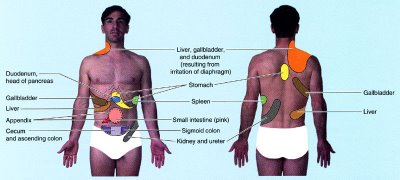கோகிலா மகேந்திரன்
பத்துநாள் சாப்பாடு இல்லாமல் பட்டினி கிடந்த நாய்க் கூட்டத்தின் முன்னால் சாப்பாட்டுப் பார்சலை எறிந்தது போல – அந்த 'மினிபஸ்' ஸைக் கண்டதும் சனங்கள் பாய்ந்து ஏறிய காட்சிக்குப் பொருத்தமான உதாரணமாய் அவளுக்கு அதுவே தோன்றியது.
எந்த நேரத்தில் எது நடக்குமோ? எப்போது போக்குவரத்து எல்லாம் திடீரென ஸ்தம்பித்துப் போய்விடுமோ என்ற பதட்டத்தில் மக்கள் பாய்ந்தார்கள்: அவர்களிலும் பிழையில்லைத்தான்!
ஆனாலும் அவள் நாயாகவில்லை!
அவளுக்குத் தெரியும், கிரிசாம்பாள் மாதிரிக் கடைசிவரையில் நின்றாலும் 'மினிபஸ்ஸின் மினிப் பெடியன்' விட்டுவிட்டுப் போகமாட்டான். பாய்ந்தோடிப்போய் கும்பலுக்குள் சேர்ந்து நசுக்குப்படாமல் இறுதியாகத் தனித்து நின்ற அவளை, 'மினிப் பெடியன்' இராஜ உபசாரம் செய்து வரவேற்றான்.
'அக்கா, இடமிருக்கு வாங்கோ..... உதிலை அடுத்த சந்தியிலை கனபேர் இறங்குவீனம், இருக்கிறதுக்கு சீற் கிடைக்கும் வாங்கோ...'
அவன் உபசாரம் செய்யாமல் இருந்திருந்தாலும் அவள் ஏறித்தான் இருப்பாள். 'நெருக்கடி' என்று இதை விட்டு விட்டு, அடுத்ததற்குக் காத்திருப்பதில் பயனில்லை. அடுத்ததும் இப்படி அல்லது இதைவிட மோசமான நிலையில்தான் வரக்கூடும்.
மேலே நீலநிற மேகத்தில் வெண்பஞ்சு முகில்கள் தலை தெறிக்க ஓடிக்கொண்டிருந்தன.
'அக்கா மேலே ஏறுங்கோ! இதிலை நிண்டா விழுந்திடுவியள். உள்ளுக்குப் போங்கோ...'
அவள் மேலே ஏறியபின் திரும்பிப் பார்த்தாள்: புற்போட்டின் ஒற்றைக்கால் தூங்கலில் ஏழுபேர்.
முகத்தை எந்தத் திசையில் திருப்பினாலும் மூக்குக் கண்ணாடி உடைந்துவிடும் போல இருந்தது. 'பாங்க்'கிலிருந்து புறப்படும்போதே, கண்ணாடியைக் கழற்றி, 'ஹான்ட்பாக்'கில் வைத்துக் கொள்ளாத தன் மறதியைத் தனக்குள்ளாகவே நொந்து கொண்டாள். ஒற்றைக்காலை யாரோ சப்பாத்துக் காலால் நசித்தார்கள். வலியினால் முகத்தைச் சுளித்துக் கொண்டவள், 'நசிபடும் இனத்தில் நானும் ஒரு பிரதிநிதி' என்று நினைத்து உடனேயே சிரித்துக்கொண்டாள்.
'அண்ணா, காலை எடுங்கோ, என்ரை கால் சப்பலாப் போச்சு....'
'ஓ.... ஐ ஆம் சொறி.... தெரியாமல் மிதிச்சிட்டன்....'
'ஒரு பொம்பிளை வேலைக்குப் போறதெண்டால், தனிக் கார் எடுத்து வைச்சு ஓட்டிக்கொண்டு போற வசதியிருக்க வேணும். அல்லது நடந்து போகக்கூடிய அளவு தூரத்திலை வீடு இருக்கவேணும், இரண்டும் இல்லாட்டி வேலைக்குப் போகப்படாது....'
அவளைவிடக் குறைந்த வயது - அவளைவிடக் குறைந்த சம்பளம் - அந்த 'டைப்பிஸ்ட் கிளார்க்' சத்தியா. சுகந்தரும் சுகந்தங்களையும் பூசிக்கொண்டு, 'பாங்க்'கிற்கு வருவதைப் பார்க்க, அவளுக்குப் பெரிய அசூயை கிளப்பும். என்ன செய்வது? அப்பாவும், தாத்தாவும் ஊரை ஏமாத்திச் சேர்த்து வைத்த காசு லட்சம் லட்சமாய் இருக்கவேணுமே கார் வாங்க?
ம்...! பெருமூச்சு ஒன்று பெரிதாய்க் சிளம்பி வெளிச்சுவாசமாய் முடிவடைவதற்கிடையில் -
'மினிபஸ்' 'பிரேக்' போட்டதைச் சாட்டாக வைத்துக் கொண்டு பின்னால் நின்று தன் முழு உடலும் அவள்மேல் படும்படி அவளுக்குமேல் சாய்ந்தான் ஒரு 'கூலிங்கிளாஸ்.'
அது எதிர்பாராத சாய்வு அல்ல. திட்டமிட்ட சாய்வு என்பதை அவள் இலகுவில் புரிந்துகொண்டாள். ஆனாலும் உடனடியாக ஒன்றும் செய்யமுடியாத நிலை. வாயுள் கசந்த எச்சிலை வெளியே எட்டித் துப்பினாள். அவன் மீது விழுந்திருக்க வேண்டியது, பாதையோரத்தில் சங்கமமாகியது.
இரண்டாவது முறையாக அவன் அவளது இடுப்புப் பகுதியில் கைபடும்படி நெரிந்தபோது, ஆறடி உயரத்தில் ஆஜானுபாகுவாய் நின்ற அவனது உள்நோக்கம் என்னவென்று கண்டுபிடிக்க முடியாதிருந்தது அவளால். அவன் காதருகில குனிந்து மிக மெலிதாகவும், அமைதியாகவும் அவள் சொன்னாள்.
'தம்பி நாங்கள் கலியாணம் கட்டிப் பிள்ளையும் பெத்த ஆக்கள்' பக்கத்தில் வேறு யாருக்கும் கேட்டிருக்கலாம். நிச்சயமாகத் தெரியவில்லை. ஆனால் அவனுக்குக் கட்டாயம் கேட்டது என்பது, அவன் 'இறக்கம், இறக்கம்' என்று கத்திக் கொண்டு விழி பிதுங்கியபடி பாய்ந்து இறங்கிய வேகத்தில் தெரிந்தது.
உண்மையாவவே திருமணம் செய்வதற்கு முன்னால் கூட, இப்படியானவர்களுக்கு இப்படி அமைதியாகவே சொல்லியிருக்கலாம் என்று இப்போது அவளுக்குத் தோன்றியது. ஆனால் அப்போது அப்படி முடியவில்லையே!
அப்பனை முதல் மாசியப்பிட்டி வரை அவளுக்குப் பக்கத்தில் அமர்ந்திருந்த கிழவி, மாசியப்பிட்டிச் சந்தியில் கடகத்தையும் தூக்கிக்கொண்டு இறங்கியவுடன் பின்னால் அமர்ந்திருந்த ஒரு 'சதுர மூச்சி' திடீரெனப் பாய்ந்து வந்து அவளுக்குப் பக்கத்தில் இருந்தபோது அவளுக்குச் சிறிது சந்தேகம் இருந்தது.
'இது ஏதோ கொழுவலுக்குத்தான் ஆள் வந்திருக்கு, 'பிக் பொக்கற்' ஆகவும் இருக்கலாம் என்ற சந்தேகத்தில் அவள் தனது 'ஹாண்ட்பாக்கை' எடுத்து, அவன் இருந்த பக்கதிற்கு மறுபக்கம் மிக அவதானமாய் வைத்துக் கொண்டாள்.
அவன் தள்ளத் தள்ள, அவளும் தள்ளித் தள்ளி, இனி மேல் தள்ள முடியாத அளவிற்கு ஒதுங்கியிருந்த போது,
அவன் மார்பில் குறுக்காகக் கட்டியிருந்த கையை அவள் பக்கம் நீட்டி, அவள் மார்பில் படும்படி திருப்பியபோது,
அந்த ஒரு கணத்தில்......
அவள், தான் ஒரு பெண் என்பது, இதன் விளைவாய் என்ன நடக்கும் என்பது – எதையும் நினைத்துப் பார்க்காமல் திடீரென எழுந்து, அவனது கன்னத்தில் பளீர் பளீர் என்று திவலை பறக்க அறைந்த நிகழ்ச்சி....
'சனியன்.... மூதேசி... அம்பாசிப்பீடை....'
அப்போது அவளால் நிதானமாக இருக்க முடியவில்லை. இதோ... இப்போது பிதுங்கிக் கொண்டு ஒடுகிறானே! இவனைப் போலத்தான் அவனும் அன்று அடுத்த தரிப்பில் பாய்ந்து விழுந்து இறங்கிக் கொண்டான். அதன் பின்னர் தான் அவளுக்குச் சல கண்டமாய் வியர்த்துக் கொட்டிற்று, பஸ்ஸில் இருந்த மற்றவர்கள்,
'என்ன பிள்ளை? என்ன பிரச்சனை? என்ன நடந்தது? என்று கேட்க, இவள் பதில் ஒன்றும் சொல்லாமல் மௌனக் கண்ணீர் வடித்தாள்.
'இதென்ன கேள்வி? ஒரு குமர்ப்பிள்ளை, ஒரு பெடியனுக்குக் கை நீட்டி அடிக்கிறதெண்டால், என்ன நடந்தது எண்டு கேட்கவேணுமே?'
என்று அவளுக்கு வக்காலத்து வாங்க, இவள் அதற்கும் மௌனமாய் இருந்த நிகழ்ச்சி இன்னும் பசுமையாய் மனதில் நிழலாடுகிறது.
ஒரு நாள் மட்டுமா?
ஒருவனுக்கு ஒரு நாள் ஊசிக்குத்தல்!
இன்னெருவனுக்கு இன்னொரு நாள் பிளேட் கீறல்!
'உன்ரை வறட்டு றாங்கியாலை நீ ஒரு நாளைக்கு எக்கச்சக்கமாய் பிரச்சனைப்படப் போறாய்' என்று அம்மா சொல்கிறாள்.
இப்படி எத்தினை நாள்கள்தான் சமாளிப்பது?
'அவங்களெல்லாம் என்னோடை சொறியறதுக்கு, நான் வடிவாகத் தகதகவெண்டு சொர்ண விக்கிரகம் மாதிரி இருக்கிறது மாத்திரம் காரணமில்லை. நான் நடக்கிறபோது பார்த்தால், மலர்ந்த புஷபங்கள் இரண்டு தத்துவது போலத் தோன்றியது மட்டும் காரணமில்லை. என்ரை கழுத்திலை ஒரு தாலிக் கொடி இல்லாமல் இருக்கிறதும் ஒரு காரணம் என்று உணர்ந்த நாள்களில் தான், அதுவரை வீட்டில் பேசப்பட்டு வந்த திருமணங்களை எல்லாம் தட்டிக் கழித்து வந்தவள், திடீரெனத் திருமணத்திற்குச் சம்மதித்தாள்.
இன்னும் ஏழு நாள்கள்! ஆறு, ஐந்து, நாலு, மூன்று, இரண்டு..... நாள்கள் வேகமாய்க் கொடிகட்டிப் பறந்தன. இப்பொழுது அவள் கழுத்தில் கொடி ஏறிவிட்டது!
கொடியோடு பஸ்ஸில் ஏறும்போது ஒரு ஆறுதல்!
'அப்பாடா இனிமேல் இந்தக் குரங்குகள் சேட்டை விடாதுகள்....'
உண்மைதான்!
அவள் எதிர்பார்த்தபடி சில மாதங்களாய் அவளோடு ஒருவரும் சொறியவில்லை. அவளுக்கு அருகில் ஒரு 'சீற்' வெறுமையாக இருந்தாலும் கூடச் சில சமயங்களில் நின்று கொண்டிருக்கும் சாரங்களும், வேட்டிகளும், காற்சட்டைகளும் அதில் அமர விரும்பாதவர்கள் போல் நின்று கொண்டிருந்தார்கள்.
ஒவ்வொரு மாதமும் இந்த மூன்று நாளும் வேலைக்குப் போவது, அது பெண்களுக்கென்றே விதிக்கப்பட்ட தண்டனை! அவளால் நடக்கவே முடியவில்லை! தேகமெல்லாம் ஒரே அலுப்பு! 'பாங்க்' இலிருந்து பிரதான 'பஸ்' நிலையத்திற்கு வரச் சோம்பல்பட்டுக் கொண்டு அவள் 'பாங்'கிற்கு முன்னால் இருந்த 'ஹாலற்'றிலே நின்று கொண்டிருந்தாள். வீதியில் ஜன நடமாட்டம் குறைவுதான். இப்போது யார்தான் தேவையில்லாமல் வீதிக்கு வருகிறார்கள்? 'ஹாண்ட்பாக்'கிலிருந்து 'றீடர்ஸ் டைஜஸ்டை' எடுத்து வாசித்துக் கொண்டிருந்தாள்.
யாரோ இருவர் சைக்கிளில் வந்த மாதிரி இருந்தது. அவள் கவனிக்கவில்லை.
கழுத்தில் ஏதோ அட்டை ஊர்ந்தது போல..... என்ன இது?
அவள் சிந்தனை புத்தகத்தைவிட்டு மீண்டபோது, அந்த வெளுத்த வெள்ளைச் சாரங்கள் இரண்டும் தூரத்தில் பறந்து சொண்டிருந்தன.
'ஐயோ என்ரை தாலிக்... தாலிக்கொடி..... கள்ளன்... கள்ளன்...'
அவள் பலமாகக் குழறிக் கொண்டிருந்தபோது, நல்ல காலமாக அவ்விடத்தில் வந்த 'பாங்க்' மனேஜரின் கார் அவர்களைப் பிடித்துத் தாலிக்கொடியை மீட்டெடுத்தது.
அடுத்த நாள் அவளது கணவரே சொல்லிவிட்டார். 'நீர் கொடியை வைச்சிட்டு ஒரு மாலையைப் போட்டுக் கொண்டு போமன், பளபளவெண்டு மின்னிற உந்தக் கொடியாலை உம்மடை உயிருக்கே ஆபத்து'
கொடியினால் உயிருக்கு ஆபத்து என்பது உண்மைதான். ஆனால் கொடியில்லாவிட்டாள் சுய கௌரவத்திற்கும் மரியாதைக்கும் ஆபத்து. இதை எப்படி இவரிடம் சொல்வது.
பழைய நிகழ்வுகளின் கனம் இவருக்கு என்ன தெரியும். நீரில் ஊரிய சாக்குப் போல அவளுக்குள்ளே இதயம் கனத்தது.
இப்போது அவள் மீண்டும் கன்னி போலத் தோற்றமளிக்கிறாள். மீண்டும் பிரச்சனை.
இன்று அந்தக் 'கூலிங்கிளாசு'டன் ஏற்பட்ட பிரச்சனையில் கலங்கிய கண்களை மறைத்துக்கொள்ள, அவள் 'ஹாண்ட்பாக்'கிலிருந்த பத்திரிகையைத் தூக்கிப் பார்த்துக் கொண்டாள்.
'சும்மா.... நோனா..... மானா' எண்டு பத்திரிகையிலை ஏதோ எல்லாம் எழுதிறான்கள். இதைப்பற்றி... இந்த வகையான பெண்களின் பயணப் பிரச்சனை பற்றி.... பொது வாகனங்களில் பெண்கள் கௌரவமாகப் பயணம் செய்ய முடியாதிருக்கும் நிலை பற்றி மக்கள் குரல் பகுதிக்கு எழுதவேணும்...'
இந்த நினைவுடனே உறங்கிப் போனவள் அடுத்த நாள் வேலைக்குப் புறப்பட்டபோது 'ஹான்பாக்'கில் ஊசி, பிளேட் ஆகியவற்றுடன் நினைவாக ஒரு காஞ்சோண்டி மரக்கொப்பையும் எடுத்து வைத்துக்கொண்டாள்.
சொறியிறவன் ஒரேயடியாகச் சொறிஞ்சு கொண்டு இருக்கட்டும்!.


